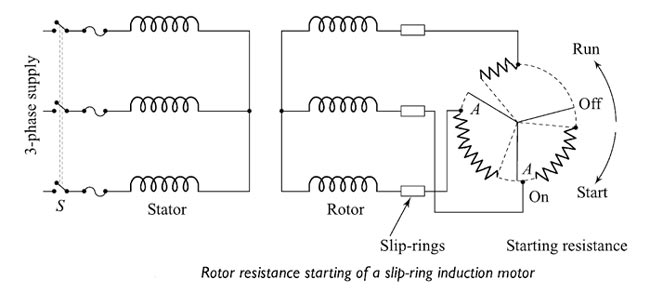During the starting of a slip ring induction motor using rotor resistance starter, the insertion of resistance in the rotor circuit causes:
Right Answer is:
Stator current to decrease and torque to increase
SOLUTION
This type of starter is used with a slip-ring wound rotor motor. These motors and starters are primarily used where the motor will start against the full load, as an external resistance is connected to the rotor windings through slip rings and brushes, which serves to increase the starting torque.
Since the starting torque per phase of the induction motor is directly proportional to the rotor winding resistance and terminal voltage. Therefore, the addition of resistance in the rotor circuit not only reduces the current drawn by the motor but also increases the starting torque.
By adding a suitable external resistance in the rotor circuit, such that r2‘ = x2‘, the starting torque can be made equal to the maximum torque developed. This is an ideal method used for starting slip-ring induction motors on load. This facility by which the starting torque can be varied in a slip-ring induction motor is the main advantage of this type of motor over the squirrel-cage type motors.

